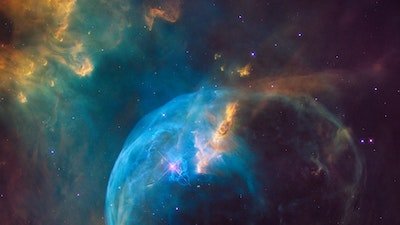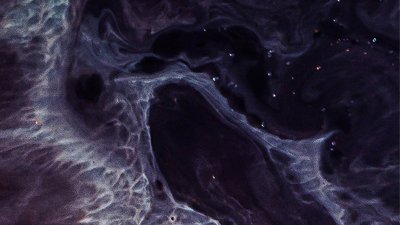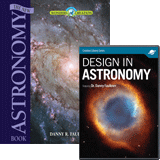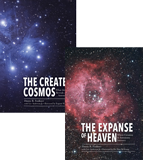
Are Redshifts Cosmological?
Dr. Danny Faulkner recently published an article in the Answers Research Journal making the case for redshifts being cosmological. He makes a number of important points about redshifts, quasars, and an expanding universe. This article will summarize Dr. Faulkner’s research.
Light is emitted from distant stars and galaxies and takes time to reach earth. The wavelength of light involved can be changed, depending on how the object emitting it is moving. If the object is moving away from earth, the light will be redshifted, meaning that the wavelength of light becomes longer and more red. If an object, such as a star or galaxy is moving towards earth, then the wavelength is blueshifted. Blueshifted light, which is equivalent to negative redshift, has wavelengths that have been shortened towards the blue end of the light spectrum. Objects within our own Milky Way galaxy can have modest redshifts or blueshifts. However, with just a few exceptions, other galaxies have redshifts.
Dr. Faulkner makes the case in his article that redshifts are cosmological because they are the result of the universe expanding. He bases this on something called the Hubble relation. The Hubble relation is a linear way of showing that redshift increases with increasing distance or decreases with decreasing distance. The Hubble relation ties to Einstein’s theory of general relativity. According to general relativity, the universe is either expanding or contracting. The universe could stay stable, with no expansion or contraction, but only under very specific conditions. If the universe is expanding, redshift ought to increase with increasing distance. Since the Hubble relation confirms this, most scientists have accepted that the universe is expanding. If redshifts of distant galaxies are due to expansion, then their redshifts reflect distance, and we say their redshifts are cosmological.
Doppler Effect
A technical point is that within general relativity, distant galaxies aren’t moving through space away from us. Rather, it is space between us that is expanding. Galaxies can move through space. We detect this motion through the Doppler effect. You probably have observed the Doppler effect with sounds emitted by moving sources, such as a horn on a speeding train or a siren on an emergency vehicle. As the source moves toward you, the pitch of the horn or siren is higher (shorter wavelength), and the pitch is lower (longer wavelength) as the source moves away. The light of moving galaxies does the same thing—galaxies moving away are redshifted, and the light of galaxies moving toward us is blueshifted. Galaxy motion is as likely to result in a blueshift as it is to produce a redshift, which is very different from cosmological redshifts. Furthermore, except for the closest galaxies, cosmological redshift is much larger than Doppler shift. Unfortunately, redshift due to expansion is indistinguishable from Doppler shift. The observed redshift of a galaxy is the sum of its cosmological redshift and its Doppler motion. This makes it difficult to measure the rate of expansion of the universe.
One of the best evidences that redshift is cosmological, and, by extension, that the universe is expanding, are quasars or QSOs. All quasars have high redshifts, which, if redshifts are cosmological, means they are very far away from earth. Most astronomers believe that quasars are powered by supermassive blackholes. There are over ten thousand known quasars, and more are constantly being discovered. Interestingly, the greater the distance one gets from earth, the more quasars are found. Since distance in space is measured in light years (the distance light travels in a year), the further from earth an object is, the older it must be. The implication is that quasars were common in the universe’s past but, since none are found close, are uncommon today. This is strong evidence for a universe with a beginning, rather than an eternal universe.
Steady State?
Ironically, many creationists have embraced the work of an astronomer named Halton Arp, who fought for an old model of cosmology called the steady state theory. The steady state theory claimed that the universe had no beginning or end and that it did not change. Under this theory new stars and galaxies might form, but only to replace old ones in similar locations. Arp was the chief proponent of this theory, and many creationists accept his premise that redshifts are not cosmological. Arp’s primary argument was that some galaxies appeared to be connected by matter yet had very different redshifts. If the quasars and galaxies are physically connected as Arp’s photos suggested, then the quasars could not be at great distance. However, further study has raised considerable doubt about the physical connections between galaxies and quasars. Arp proposed quasars were the accumulation of new matter that the steady state theory needed to be sustainable. However, this raises a problem. All known quasars are redshifted rather than blueshifted. If Arp were correct, then it would be expected that at least a few of these quasars would be moving towards earth and thus be blueshifted.
A second issue with Arp’s work has to do with what are called Lyman-alpha forests. Not everything in space is visible, because many distant objects are just too faint, even to the best telescopes in the world. As light passes through space, it passes through some of these non-visible objects. These objects contain clouds of hydrogen, and the hydrogen absorbs energy at a certain wavelength that physicists call Lyman-alpha. Many quasars and some distant bright galaxies have multiple absorptions of Lyman-alpha, each at different wavelengths, giving the appearance of a forest in the spectra of the quasars. These absorptions have different redshifts, all less than the redshift of the quasar. This is powerful evidence that redshifts are indeed cosmological. If redshift did not increase with increasing distance, quasars would not have multiple redshifts that inevitably decrease as they get closer to earth. The objects cannot be further away than the quasar, or they would not affect redshift. Since the light must leave the quasar and pass through these as-yet invisible objects before reaching earth, and it produces multiple different redshifts, redshift must increase with increasing distance.
If redshifts are cosmological, the universe must be expanding. Many creationists might resist this idea as they associate it with Big Bang theory and a secular worldview. This is certainly an understandable view, given how evolutionary dogma is shoehorned into most scientific papers. However, the Big Bang model is an interpretation of the data, not an actual observation, and thus redshifts and an expanding universe are in no way tied to it. Other models could easily be used as well and incorporate both with no reference to evolution or the Big Bang. Further, redshifts of quasars provide strong evidence for the universe having a beginning, something creationists should expect to see since Genesis 1:1 states there was a beginning. Rejecting an expanding universe amounts to a rejection of general relativity. Rejecting it simply because it is associated with an evolutionary idea in the Big Bang risks putting creationist cosmologists in the untenable position of being unable to develop a biblical cosmological model.
Recommended Resources

Answers in Genesis is an apologetics ministry, dedicated to helping Christians defend their faith and proclaim the good news of Jesus Christ.
- Customer Service 800.778.3390
- © 2024 Answers in Genesis







